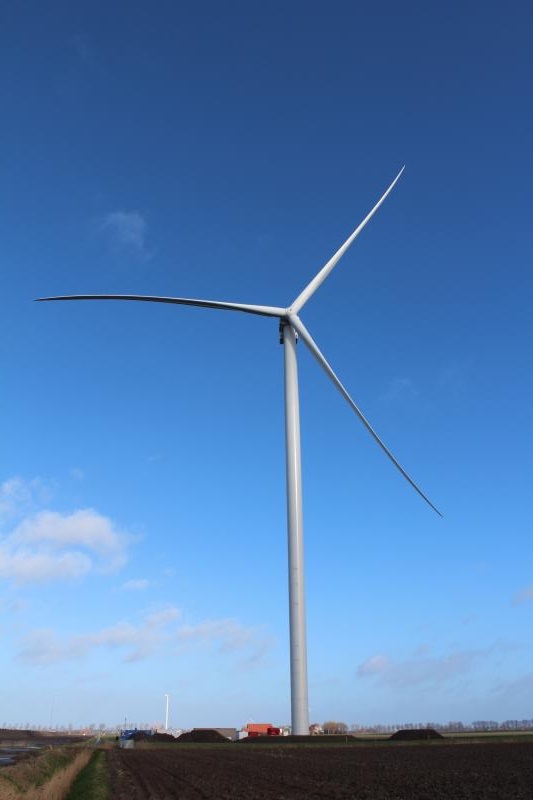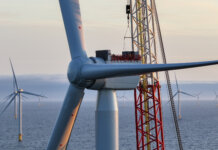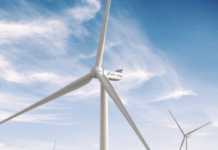A prototype for GE Renewable Energy’s Cypress platform is now fully operational, producing power at a rated level of 5.3 MW in Wieringermeer, the Netherlands. The platform represents GE’s largest onshore wind turbine in operation to date.
The Cypress 5.3 MW prototype was installed in late 2018 and produced its first kilowatt in February 2019. GE Renewable Energy will continue to operate the prototype over the coming months in order to validate its performance. This testing will also support the process of obtaining a type certificate, a key step in commercializing the product, notes GE.
“We’re delighted with the progress our team has been able to make in bringing our innovative, high-tech turbine to market on an accelerated schedule,” comments Jérôme Pécresse, CEO of GE Renewable Energy. “We are confident that Cypress, with its two-piece blade design, will be a game-changer for the industry. We’re hearing equal enthusiasm from our customers across the globe, who tell us they appreciate the potential of Cypress to help them both lower the cost of onshore wind and gain added flexibility in siting turbines.”
The Cypress platform is offered with multiple ratings and varying hub heights. It will enable a lower cost of electricity by matching each wind turbine solution to specific site needs, which is critical as wind power increasingly competes on price with other sources of power generation, says GE.
The first turbine in the platform, the 4.8-158, was introduced in September 2017. The 5.3 MW model and Cypress name were introduced in September 2018.
Duncan Berry, CEO of LM Wind Power, part of GE Renewable Energy, says, “The project is truly coming together in a very short and demanding time frame. We have invented a new and effective solution for a blade in two parts, which is borne of the full expertise of LM Wind Power engineers combined with design input from GE Renewable Energy and GE Research. The technology results from decades of blade-making knowledge and experience.”





Light weight rotor can be designed using helical bladed rotor configuration (as in US 9,537,371 B2, Jan 3, 2017). This rotor concept may lead to a , DOE anticipated 50 MW rated rotors.
The issue will be stress concentrations at the segment joint. It’s an issue resolved at blade root, so not novel but instead has to be a fiberglass-fiberglass joint.
I next wonder about nacelle weight and availability of cranes large/tall enough for the design.
Ah, two-piece blade design presumably is the factor which allows road transport of the blades – something which has long been holding back increased turbine size onshore.
I wonder how much extra material is needed for a reliable joint compared to a single-piece blade.
Could it be a bonded, tapered splice? If they can make the bond as strong as the material, it could add really minimal weight